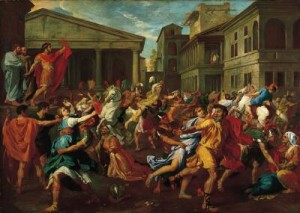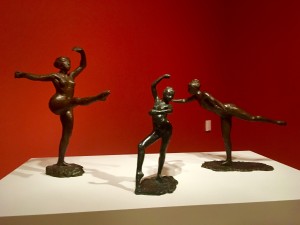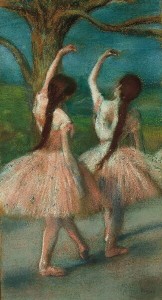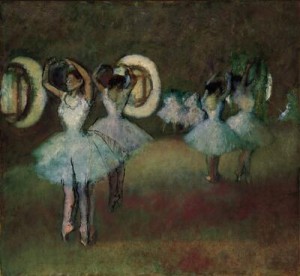Cultural Cocktail Hour
“Taking Shape: Degas as Sculptor” at the Norton Simon- a MUST SEE exhibit
Taking Shape: Degas as Sculptor
A MUST SEE exhibit at the Norton Simon
By
Leticia Marie Sanchez
Stepping into the Norton Simon Museum for a new exhibition, the foresight of collector Norton Simon never ceases to impress me. Last year, perusing the sea of Picassos for the States of Mind exhibition, I felt fortunate to have the opportunity to delve into myriad iterations of Picassos work and thereby his creative process due to the deep collection acquired by Norton Simon. This month’s exhibition Taking Shape: Degas as Sculptor onceagain felt like a seemingly boundless collection of a single artist, this time Edgar Degas. With the exception of one loan by the Getty Museum, Norton Simon’s massive collection of Degas’ sculpture, drawing, and painting comprised the entire exhibition. A deep collection affords a viewer a rich window into the of the art of creation. Moreover, the curation by Emily Talbot juxtaposed Degas’ bronze modèles, painting, and drawing in an innovative manner that allows museum goers to see familiar works in a new light.
This exhibition coincides with two anniversaries: the centenary of Degas’ death as well as a 40-year commemoration of the purchase of the bronze modèles by Simon. Today, the Norton Simon Museum retains 102 works by Degas, three-fourths of which are sculpture. Most intriguing about this exhibit were the juxtapositions between sculpture and painting, which opens one’s eyes to illuminating perspectives on Degas’ artistic process. The exhibit unfolds thematically, down to the vivid colors of the walls chosen by Talbot: red in the first gallery, symbolizing energy and dynamism, followed by the calming green hue of repose in the second gallery where there are sculptures depicted receiving massages and relaxing in baths.
DO NOT MISS these works during your visit:
1. Degas’ copy of Rape of the Sabines juxtaposed with his sculpture

Degas got his start copying masterworks including Poussin’s Rape of the Sabines. This work serves as a point of comparison between painting and sculpture. The creative juxtaposition allows a viewer to see Degas’ dynamic energy and lines both on the canvas and in the adjacent sculpture.
It is also a visual dialogue: violence against women in the Sabine narrative and the powerful response in sculpture underscoring the exuberant power of the female body.

Above: The Rape of the Sabines (after Nicolas Poussin) c. 1861-1862Edgar Degas. Oil on canvas © Norton Simon Art Foundation
(Sculpture details below)
2. Dancers in Pink

Curator Emily Talbot’s original perspective made me look at this painting in a radically new way. Instead of viewing the subject as two dancers, Talbot suggested that the painting represented a single dancer viewed in two parts. This idea corresponds with Degas’ intense focus on understanding the body in its three dimensional form.
Dancers in Pink Edgar Degas. c. 1886Pastel on paper, mounted on cardboard. 28-1/2 x 15-1/4 in.F.1969.05.1.P © The Norton Simon Foundation
3. Little Dancer, Aged Fourteen

Perhaps the most shocking detail I learned when walking through the exhibit was that in the immense sea of beautiful sculpture, only one was exhibited during Degas’ lifetime: Little Dancer, Aged Fourteen. With its avant-garde use of real materials, such as human hair and real slippers, the Little Dancer caused an uproar at an 1881 Impressionist exhibition. Due to the horrendous reviews, Degas never again exhibited sculpture in public. Yet, in, the privacy of his studio close friends and visitors could see the world of horses, dancers, and bathers that was closed off to the public. The exhibit enfolds us into the private creative world of Degas.
Little Dancer, Aged Fourteen, Edgar Degas; Modeled 1878–81; cast after 1918 Painted bronze with cotton and silk on a wooden base; 37-5/8 x 13-3/16 x 9-15/16 in.M.1977.02.70.S © Norton Simon Art Foundation
4 Dancers in the Rotunda at the Paris Opéra

If you observe this painting closely you will see Degas’ fingerprints on the canvas. To me, this painting represents the tactile nature of painting, a delightfully surprising connection with the sculptural works in the exhibit.
Dancers in the Rotunda at the Paris Opéra. Edgar Degas. 1894 Oil on Canvas 34-7/8 x 37-3/4 in. M.1968.25.P © Norton Simon Art Foundation
5 A placard with a declaration by Degas to his dealer, Ambroise Vollard
After seeing a wax sculpture of a dancer go through 20 iterations, Vollard was stunned to see it one day as a ball of wax. Degas retorted, “You think above all of what it was worth, Vollard, but if you had given me a hatful of diamonds my happiness would not have equalled that which I derived from demolishing [the figure] for the pleasure of starting over.”
That quotation encapsulates the exhibit: as museum goers we are privy to an artist for whom the act of creating was sublime.
Sculptures adjacent to Rape of the Sabines:
Fourth position front, on the left leg. Edgar Degas Modeled c. 1885-90. Cast1919-21. Bronze. Modeled c. 1885-90; cast 1919-21 . Copper alloy base: 6-3/8 x 5-1/4 in. M.1977.02.08.S © Norton Simon Art Foundation
Spanish Dance. Edgar Degas Modeled 1880’s, cast, 1919-21. Copper alloy base: 3-7/8 x 6-13/16 in.M.1977.02.15.S © Norton Simon Art Foundation
Grande Arabesque, Edgar Degas. Modeled 1885-90; cast 1919-21 Copper alloy base: 7-3/8 x 13-9/16 in. © Norton Simon Art Foundation













